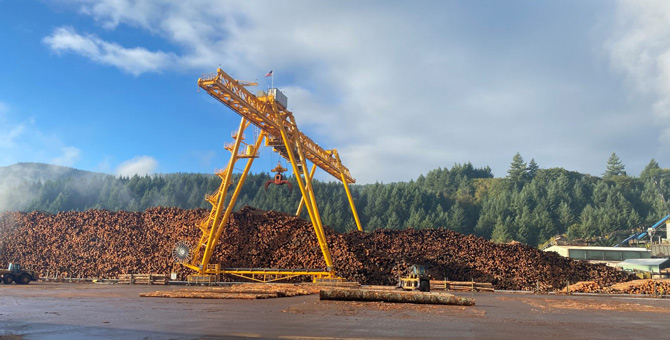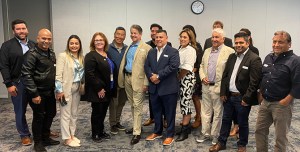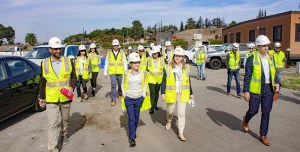As a community-engaged bank, the SF Fed seeks out real-time information on economic conditions by engaging with and learning from businesses, community organizations, and local leaders. These conversations are one of the many inputs into the decisions and policymaking at the Federal Reserve as we pursue our mission.
Here’s a snapshot of the Oregon Business and Industry’s 2023 Manufacturing Roadshow from Ian Galloway, Regional Executive of the SF Fed’s Portland branch.
Employing over 200,000 workers, Oregon’s manufacturing factories and fabrication facilities remain one of the top six sources of jobs in the state I recently had the opportunity to deepen my knowledge of this important sector as a participant in Oregon Business and Industry’s 2023 Manufacturing Roadshow.
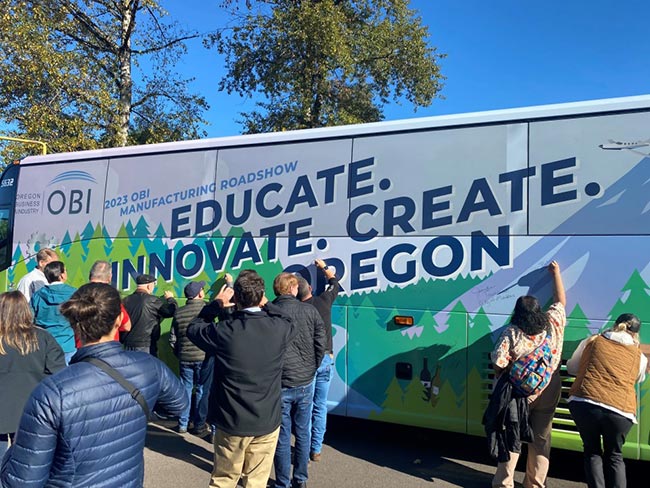
The multi-day roadshow—on an impressively vinyl-wrapped bus that was signed by participants at every stop—took policymakers and community leaders across the state to visit nine companies that highlight the diversity of manufacturers operating here in Oregon.
I’ve always been fascinated by manufacturing processes but touring these facilities underscored how closely advanced technology has been integrated into modern manufacturing. While today’s factories still rely on powerful machines applying brute force to raw materials, more and more they use precision instruments guided by advanced software.
That said, I think the increasingly popular notion that automation is leading to job losses doesn’t quite hit the mark based on what I saw on the tour. Programming, operating, and maintaining this machinery demands a highly trained workforce. That takeaway applied to all the roadshow stops but that precision engineering skillset really hit home for me at BASX (industrial HVAC, increasingly for data servers), Epic Aircraft (carbon-fiber fuselages), and Machine Sciences (custom parts for a variety of applications, including aerospace and defense).
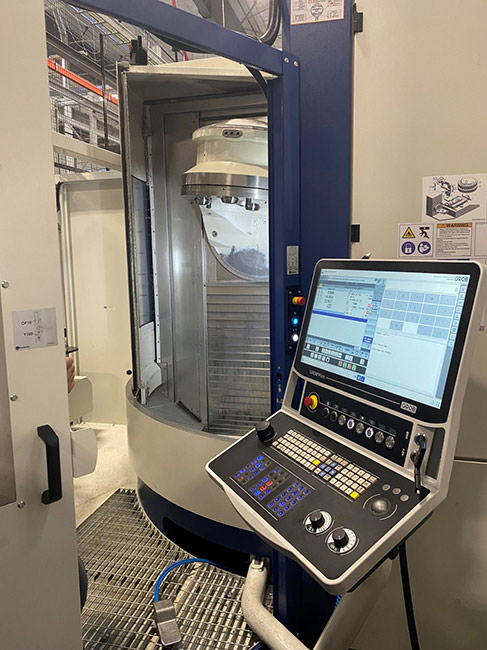
In fact, I heard repeatedly from several companies on the tour—as well as other business leaders—that recruiting, training, and retaining an adequate number of workers is one of the biggest challenges constraining their growth. This shortage of workers is driven by a number of factors. Some of it can be chalked up to simple bad PR. As several tour participants noted, people still tend to associate manufacturing jobs with noisy, repetitive, lower-skilled work. The reality is quite the opposite: these jobs are often complex, varied, and well-paying opportunities in high growth industries.
Of course, the challenge of workforce development in manufacturing extends beyond public perception. Regional challenges loomed large in many of our conversations. Many businesses cited the lack of available housing and the high cost of childcare as significant hurdles to attracting workers, for example.
Even the state’s recent wildfires have had an impact on the labor force. In 2020, the Beachie Creek Fire burned hundreds of thousands of acres, caused enormous damage to local communities, and displaced thousands of residents in Marion County. One of the areas hardest hit was Santiam Canyon, where Freres Lumber Co. is located. Freres manufactures veneer and plywood panels, as well as a “Mass Ply” product that offers an alternative to steel and concrete in building construction. But partly because of the lingering effects of fire-displaced residents, Freres continues—three years later—to have difficulty fully staffing their operation.
While certainly highlighting manufacturing’s labor challenges, this year’s roadshow also offered the opportunity to learn about strategies companies are employing to build and invest in their workforces. In Sherwood, for example, we visited Portland General Electric’s line worker apprenticeship training facility. On a multi-acre campus, the center offers indoor and outdoor facilities for training the personnel who play a crucial role in maintain PGE’s grid.
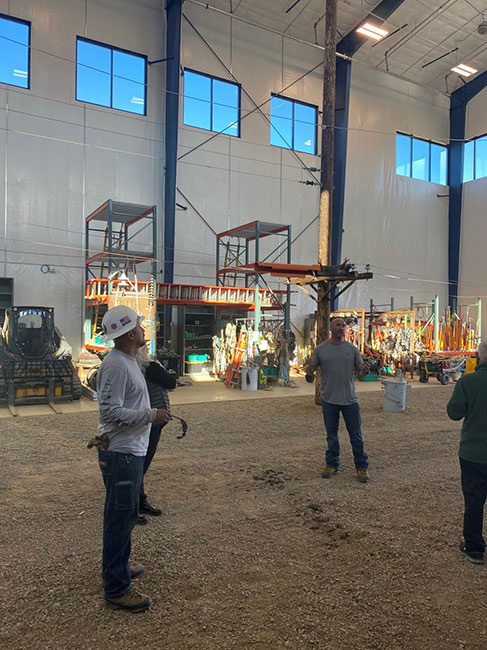
During the industry panel that was part of the roadshow’s conclusion, Alicia Chapman, Founder and CEO of Willamette Technical Fabricators—and a member of the SF Fed’s Portland Branch Board—emphasized the importance of recruiting workers from every community possible. “By focusing on attracting women and people of color to our industry, we’ve been able to attract and retain new talent and meet many of our workforce needs,” she noted.
So, despite the challenges that manufacturers face attracting and retaining talent, the main takeaway from the bus tour was clear: good manufacturing jobs exist all over the state and they can anchor communities that proactively create opportunities for businesses and workers to succeed together.
I’m grateful to have joined this year’s manufacturing tour and deeply appreciative of OBI’s commitment to our manufacturing sector, which remains so critical to Oregon’s economic present and future.
The SF Fed’s mission is to advance the nation’s monetary, financial, and payment systems to build a strong economy for all Americans. As always, we can be most effective fulfilling this mission when we better understand the economic experiences of the communities we serve.
The views expressed here do not necessarily reflect the views of the management of the Federal Reserve Bank of San Francisco or of the Board of Governors of the Federal Reserve System.
